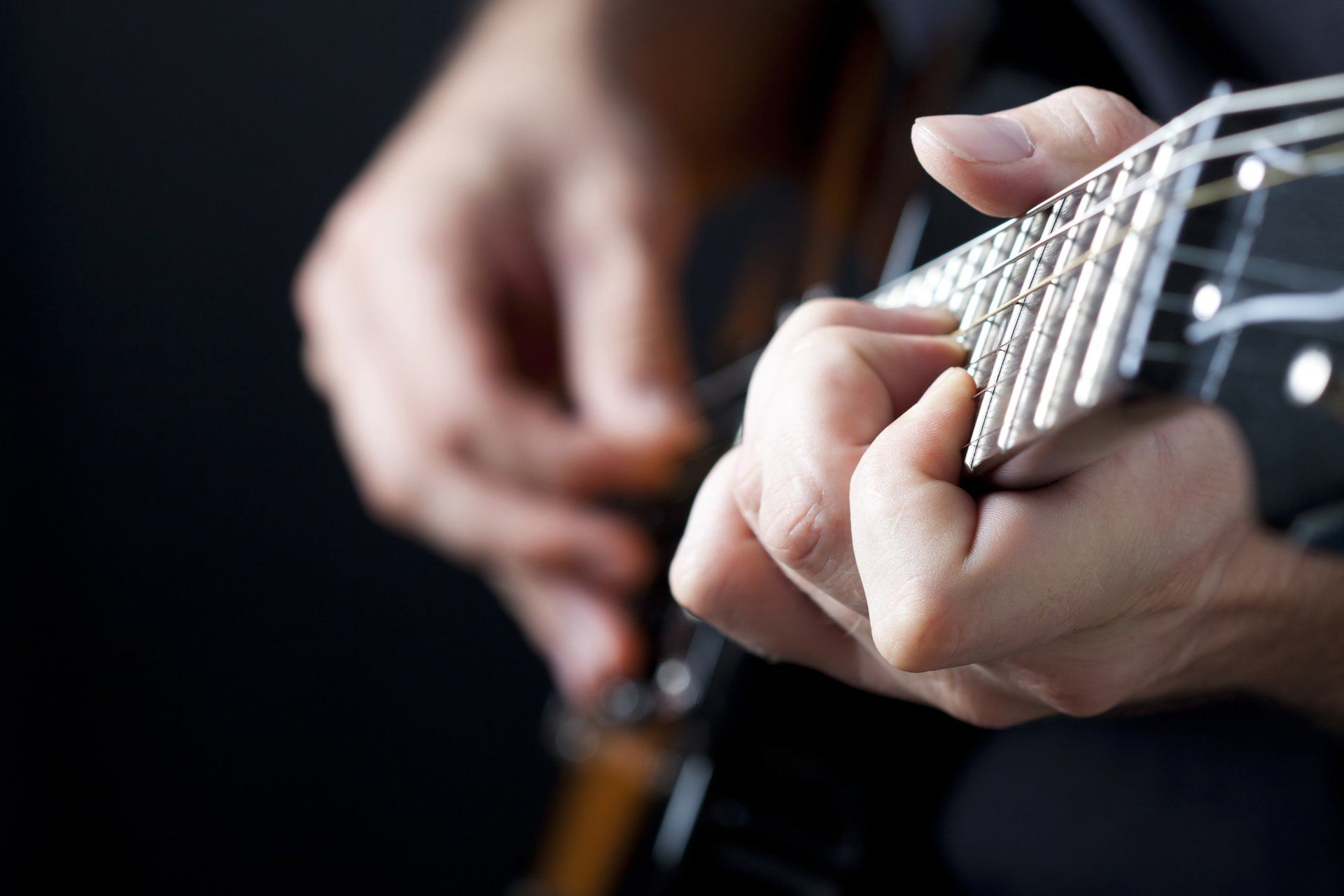Blog
STK Music Blog

Get your fingers RIGHT BEHIND the frets they're supposed to be fretting! This is another common mistake I see from beginner guitar players; aiming their fingers for the middle of the fret they're looking to hold down. This is understandable, but not ideal. The purpose of holding a string down is to change the length of the string to alter its pitch. We do that by holding the string against the fret wire. If you aim for the middle of the fret rather than right behind the fret, there is more chance of the string buzzing or the note choking out. On some guitars it will also be more difficult to hold the string down further from the fret, meaning you have to press down harder, which will cause your fingers to hurt and/or get tired quicker. The harder you're holding a chord down, the more tension there will be in your hand and this will also hamper your chord changes.

I recently rediscovered a transcription of Larry Carlton’s solo from Steely Dan’s ‘Kid Charlemagne’ in an old university text book, and remembering how fun it was the first time around, set about relearning it. Carlton’s note choice is a brilliant blend of ‘inside’ and ‘outside’ playing. Here I’ve broken down what’s going on harmonically, bar by bar. It’s a little dense, more than a little geeky, but important! Hopefully you can incorporate some of his ideas into your own solos. Here’s my own effort…

I've been teaching guitar for a decade now - wow, I feel old! Over those years I've taught people of varying abilities at different stages in their musical education and I've spotted some patterns. I thought I'd start putting a few of these common mistakes I see among my students up here, as they will certainly give a few budding guitarists something to think about. This first mistake is something that I remind students of every single day that I teach. It's such a simple correction to make and it has a huge effect on how your playing sounds: Not muting the low E-string on chords where it shouldn't be ringing out. So you've put in the hours to learn your chord shapes. You've painstakingly worked on changing from one chord to the next and you've got your strumming pattern nailed... and then, after all this work and effort, you've not muted the low E-string on certain chords which results in putting a wrong note in the bass register of pretty much every chord you play! If the chord name doesn't include an E (eg Em, E7, E) or an /E (eg C/E, D/E) then the low E-string doesn't belong in the chord . The lowest note in the chord is arguably the most important, as the bass note puts all of the other notes in context. So, letting our low E-string ring out over other chords is going to create a low drone which will affect the clarity of the intended bass movement and muddy the overall sound of our chord progression. How to fix it: 1: Be more accurate with your strumming hand. Try your best to only strum 5 strings for an A chord, 4 strings for a D chord ect. 2: Mute the low E-string so that even if you do catch it, no note sounds out. You can do this with your thumb over the top of the neck, or with a finger which is fretting another note. See the pictures below for examples.

